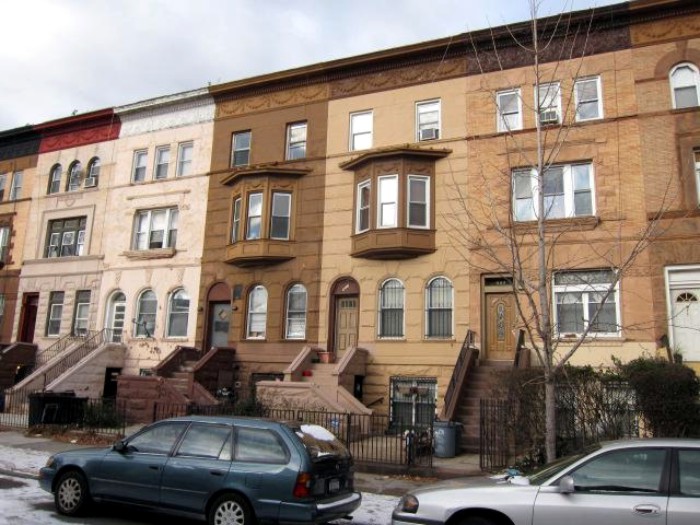6 Stories That Celebrate Brooklyn's Illustrious Literary History
The written word has always been important to Brooklyn’s history. Walt Whitman, Truman Capote, Pete Hamill, Nelson George, Richard Wright, Isaac Asimov, Jonathan Safran Foer, Marianne Moore and countless other important American writers were either born and raised here, or moved here to write. Brooklyn has writer’s ink tattooed in its bones, and the borough’s…
The written word has always been important to Brooklyn’s history. Walt Whitman, Truman Capote, Pete Hamill, Nelson George, Richard Wright, Isaac Asimov, Jonathan Safran Foer, Marianne Moore and countless other important American writers were either born and raised here, or moved here to write.
Brooklyn has writer’s ink tattooed in its bones, and the borough’s history can be told through its authors’ work as well as the spaces they’ve often occupied — Brooklyn’s libraries.
In the past, private libraries were signs of wealth and education; books were expensive, and higher learning was extended only to those who could afford it.
But throughout history, some of our greatest intellects received much of their educations — on their own — through libraries. Charles Pratt, Brooklyn’s millionaire industrialist, was self-educated through books, as was steel and railroad man Andrew Carnegie.
Both men used part of their fortunes to establish libraries so that others could educate themselves as well. Pratt opened the first free library in Brooklyn at Pratt Institute in the 1870s.
And at the beginning of the 20th century, Andrew Carnegie’s Library fund enabled the Brooklyn Public Library to build 21 branch libraries across the borough.
The Apprentices’ Library. Photo via Brooklyn Museum
Not all libraries remained as such. The Apprentices’ Library was established in the early 19th century as a place where young men in various trades could take classes in everything from reading to engineering.
This was a subscription library — it charged a small fee for membership. As the library grew, so did its interests and subject matter. It would move, grow and eventually become the Brooklyn Museum.
As the new and magnificent Brooklyn Museum, originally the Brooklyn Institute of Arts and Science, was being built, plans were in the making for a new Central Branch of the Brooklyn Public Library, to be built at nearby Grand Army Plaza.
The architect for this project was Raymond F. Almirall, who was on the Carnegie Library Committee and designed three of the branches, Park Slope, 4th Avenue and Eastern Parkway.
Raymond F. Almirall’s 4th Avenue library. Photo via Brooklyn Public Library
His massive Beaux-Arts library would have complemented the new museum, and would have completed an enormous City Beautiful civic complex that included the library, museum, Grand Army Plaza and park entrance. It never happened, as you’ll discover.
Finally, Brooklyn has always been an incubator for writers, some whose legacies are still celebrated and others who’ve slipped through the cracks. One of the most acclaimed in his day was Arthur D. Howden Smith. He lived in what is now Crown Heights North and Brooklyn Heights. Up until the Great Depression, he was one of Brooklyn’s most read authors, though today he’s totally unknown.
This collection of stories celebrates a side of Brooklyn’s literary history that you may not be too familiar with. We’ve got libraries, architects and architecture, talent and ego. We’ve got Brooklyn for your reading enjoyment.
A History of Brooklyn’s First Free Public Library, at the Pratt Institute: The Pratt Institute Library, founded by millionaire Charles Pratt in 1888, was the first free public library in Brooklyn.
How a Humble Library Blossomed Into Brooklyn’s Finest Museum: What we now know as the acclaimed Brooklyn Museum had very humble beginnings as a small library dedicated to educating a group of people who may not have had any formal education at all.
The Life and Early Architecture of Prolific Brooklyn Architect Raymond F. Almirall: Raymond Almirall spent much of his professional career designing public buildings, office buildings, churches and libraries.
How Raymond F. Almirall Almost Built Brooklyn’s Most Magnificent Library: See how Brooklyn’s magnificent Central Library was originally going to look, with Almirall at the helm.
The Story of Arthur D. Howden Smith, One of Brooklyn’s Prolific but Now-Forgotten Writers: As a young Brooklynite, Howden Smith wanted to experience war and adventure firsthand as a newspaper correspondent. So he traveled across the Balkans, embedded himself with a group of expat Bulgarians and wrote a book about it.
Arthur Howden Smith, From Adventurous Reporter to Prolific Pulp Fiction Darling: After returning to New York, Howden Smith took up covering politics for the New York Post, then transitioned to a prolific career in writing pulp fiction.
Suzanne Spellen, formerly known here as Montrose Morris, is writing Brownstoner’s first book. Sign up below to get the latest updates.
[sc:mailchimp-books ]Related Stories
Walkabout: C.B.J. Snyder: New York City’s Master School Builder
Past and Present: The Bay Ridge Public Library
581 Mother Gaston Boulevard, a Bastion of Knowledge in Brownsville


















INTERESRING ARTICLE.. YOU MUST REMEMBER THAT THE BPL WANTS TO SELL OFF ALL LIBRAIRES WITH REAL ESTATE VALUE. THEY TRIED BUT FAILED TO SEND PACIFIC ST. AND THEY ARE TRYING BUT WILL FAIL TO SELL BROOKLYN HEIGHTS. THIS IS SUPPOSEDLY FOR THE PUBLI C GOOD.. HOG WASH. IT IS FOR THE ENRICHMENT OF POLITICALLY CONNECTED DEBLASIO DEVELOPERS WHO STAND TO MAKE MILLONS AS THEY ACQUIRE THE PROPERTIES IN SECRET DEAL.S.. SHAME ONE TERM BILL